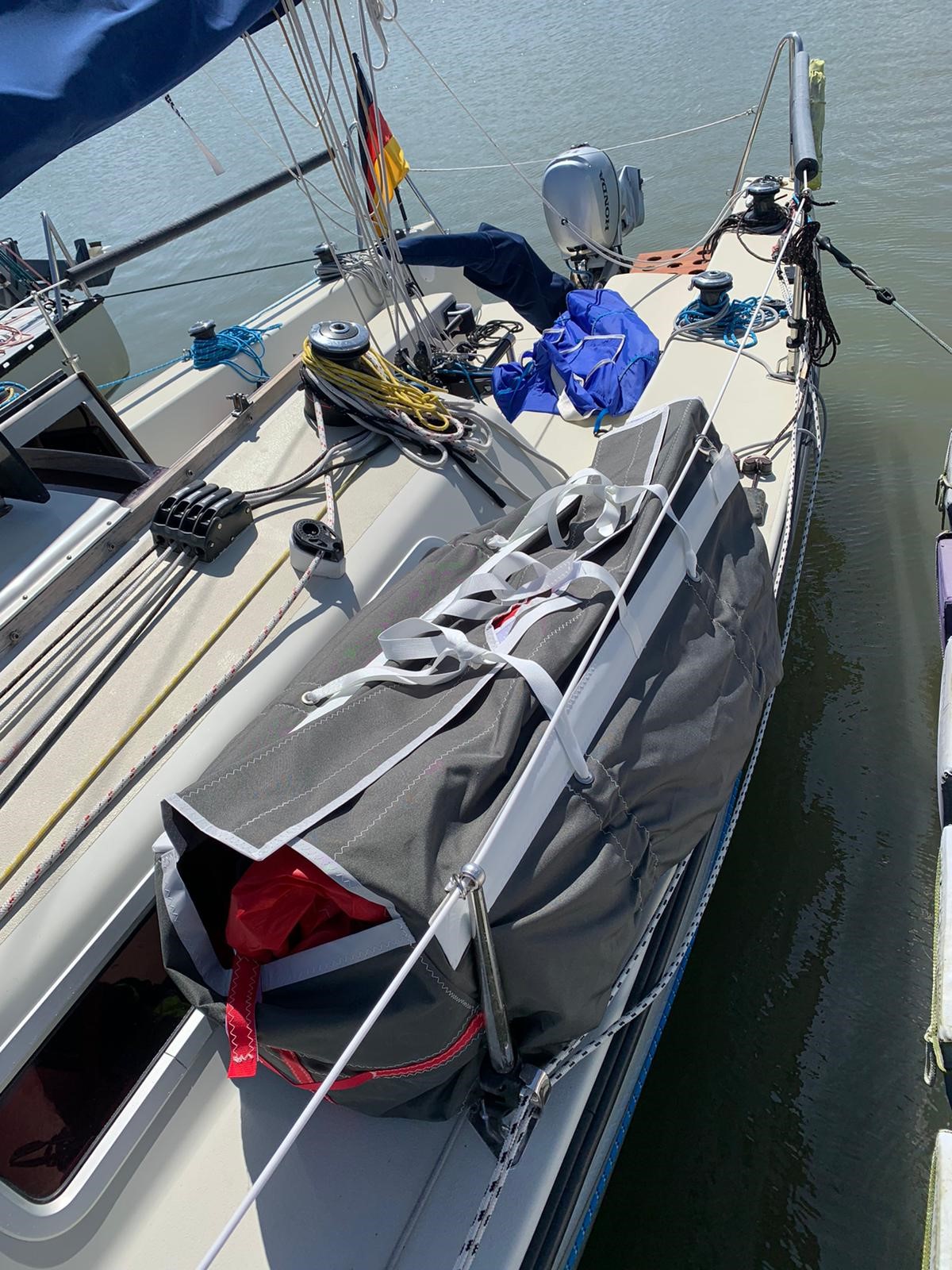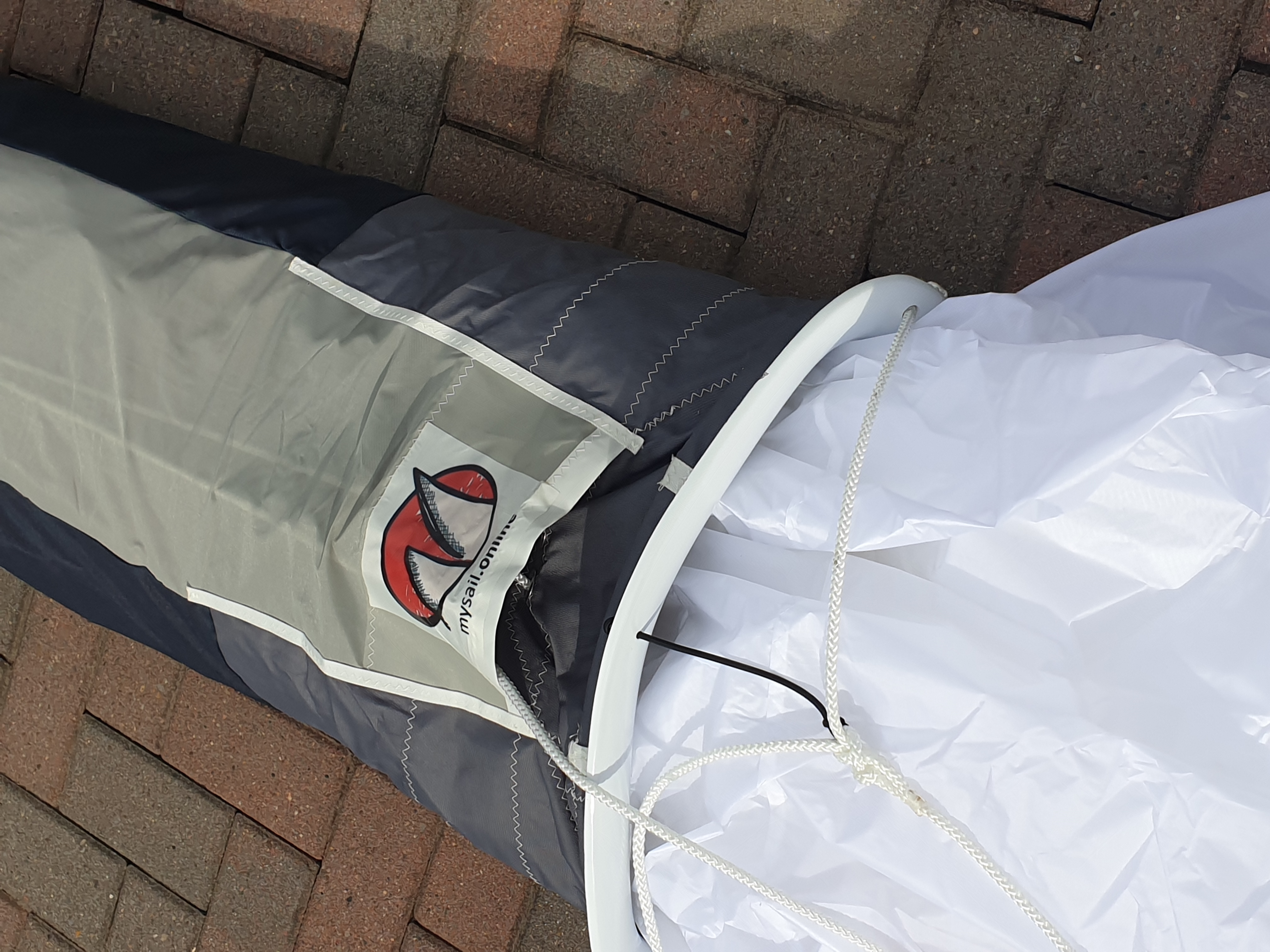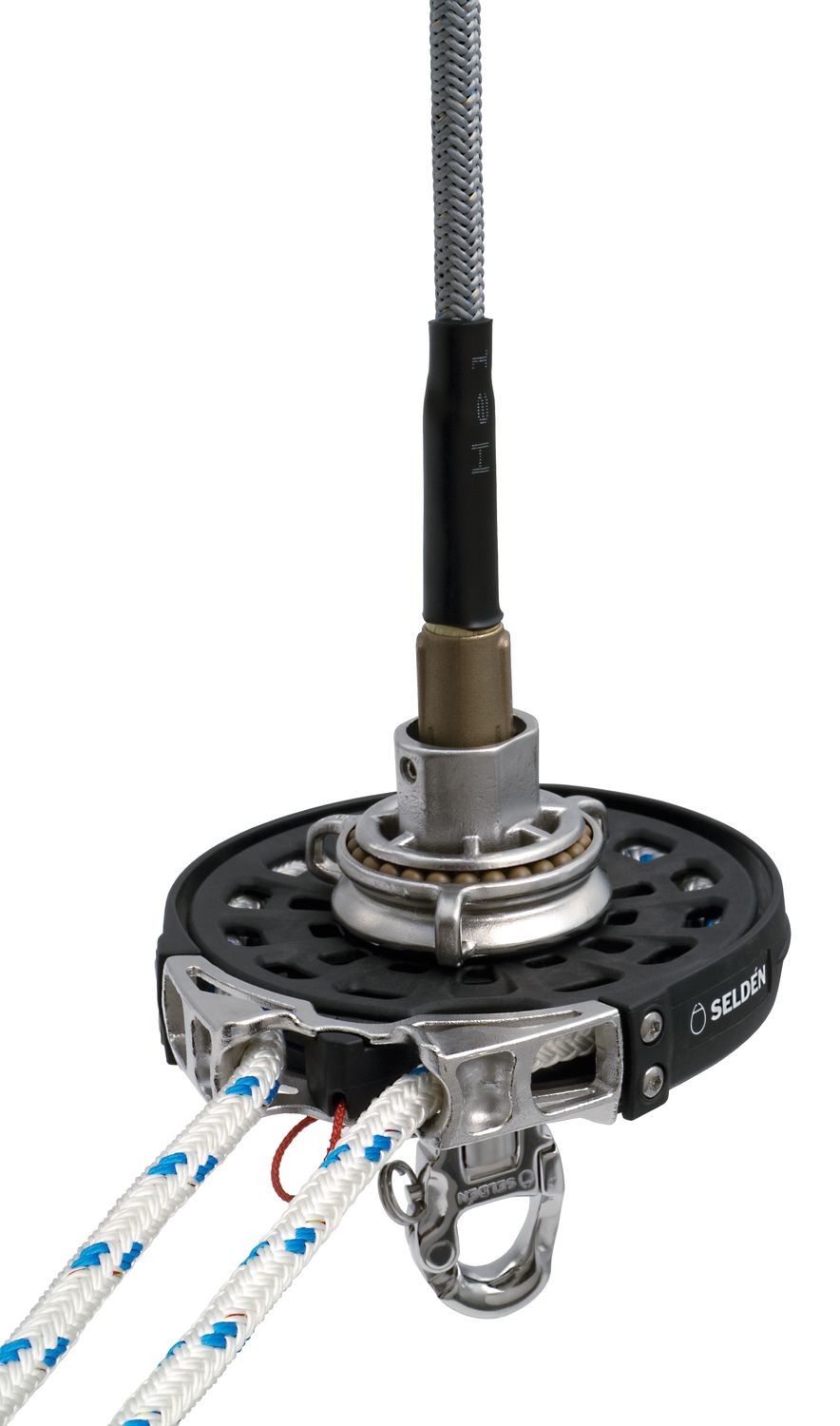Your Guide to the Ideal Gennaker for Cruising and Performance
When the wind shifts aft and the breeze lightens, it's the perfect time to hoist a gennaker sail. Ideal for downwind sailing, a gennaker adds stability and comfort - making it easier to enjoy smooth sailing even in light wind conditions.
For cruisers and short-handed crews (solo or double-handed), easy sail handling is essential. That’s why we recommend a gennaker, also known as an asymmetrical spinnaker. Unlike a traditional symmetric spinnaker, a gennaker doesn’t require a spinnaker pole, eliminating complex and risky foredeck work. You only manage the sheets - no need for guys, topping lifts, or downhauls. Even gybes are simpler and safer: everything can be handled directly from the cockpit.
Our all-purpose cruising gennaker is designed for versatility. With a medium-depth shape, it’s not overly flat (like a code sail for tight reaching), nor overly full (like a deep downwind spinnaker). It performs well across a wide range of apparent wind angles from 80° to 155°. Thanks to its forgiving shape, it’s easy to trim, reduces heeling, and handles gusts smoothly - perfect for relaxed performance cruising.
We offer standard gennaker sizes from 27 m² to 265 m², covering everything from small cruisers to performance yachts. If you're looking to buy a gennaker sail, our designs combine user-friendly handling with high efficiency - a reliable choice for any sailor who values simplicity without compromising speed.
How to Determine the Right Gennaker Size – Here's How to Measure
If you're looking to buy a gennaker, one of the first questions you'll face is: What size gennaker fits my boat? The answer primarily depends on the luff length – that is, the distance between the tack point and the point where the gennaker halyard exits at the top of the mast.
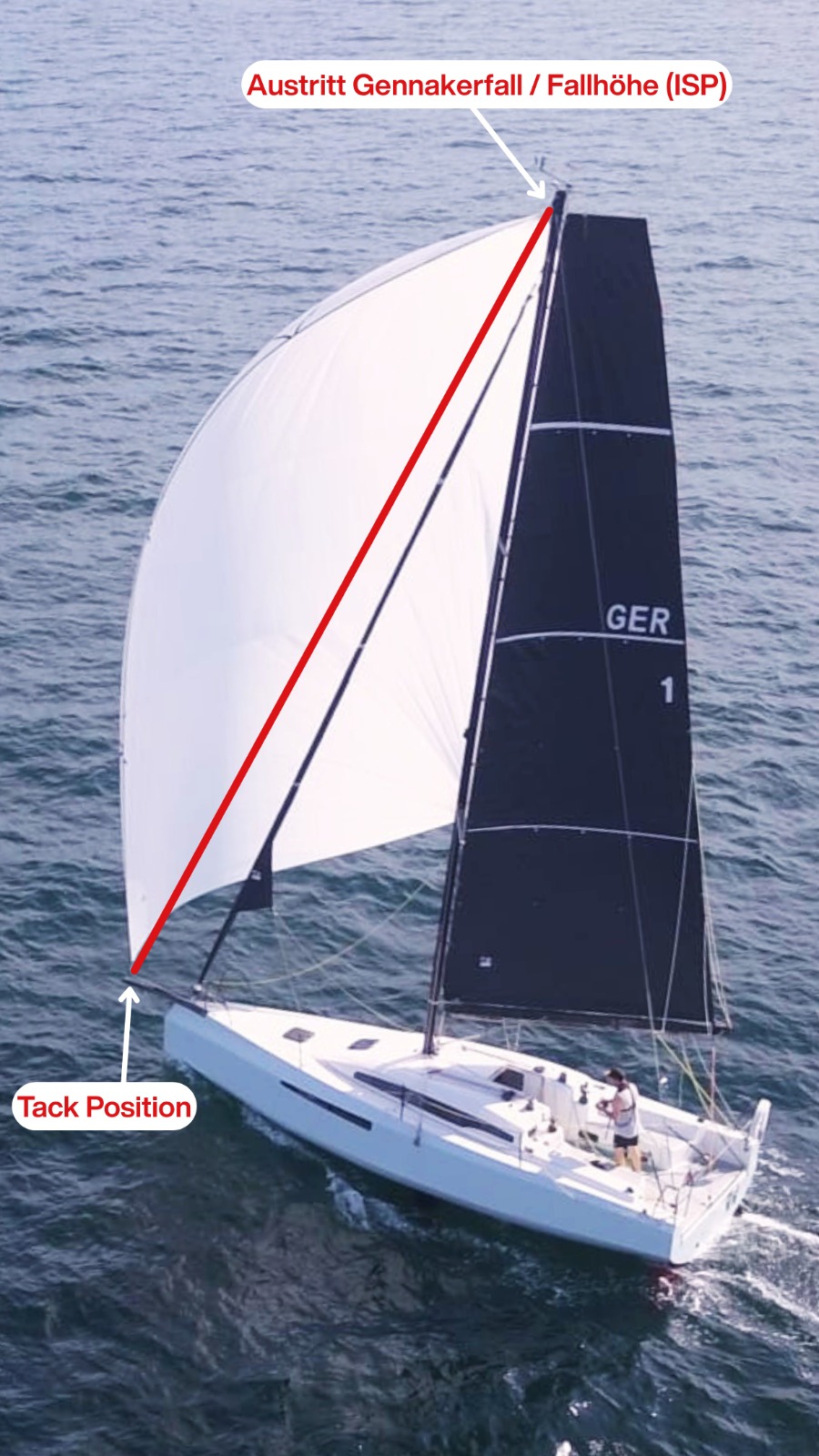
Since the sail cut is already predetermined, only one measurement really matters when determining the right Gennaker size: the luff length.
Before measuring, make sure you know the following:
-
Tack position: Where the tack line (or downhaul) is attached – for example, to the bow fitting or to the bowsprit.
-
Halyard height (ISP): The point where the Gennaker halyard exits the mast at the top.
The measured luff length is the distance between the tack position and the halyard exit at the masthead.
To achieve the best sail trim and allow for proper stretch, subtract about 20 cm from this measurement. Use the resulting value in the table below to find the correct Gennaker size for your boat.
How to Choose the Right Standard Size for Your Boat
The table below lists standard gennaker sizes along with their corresponding luff, leech, and foot measurements. Based on your measured luff length minus 20 cm, you can check the left column to find the gennaker size that fits your boat. If your measurement falls exactly between two sizes: go with the smaller one. A gennaker that's too long can cause issues, while one that's slightly shorter is usually no problem.

Here you’ll find our gennakers in all available size and color combinations:
Bow Fitting or Gennaker Pole?
A gennaker pole extends the sail further forward, allowing for cleaner airflow and better performance—especially on broad and beam reaches. Compared to a standard attachment at the bow fitting, the sail flies more stably, flogs less, and is easier to handle since it’s set slightly ahead of the bow, staying clear of the pulpit and forestay.
A particularly practical solution for both racing and cruising yachts is the extendable gennaker pole from Seldén, which noticeably improves handling and sail performance. We offer it in a durable aluminum version as well as an ultra-light carbon option.
Please note: Installing a gennaker pole changes the tack position.
Now the Question Is: How Do You Hoist and Douse Your New Light-Wind Sail?
When it comes to handling your Gennaker, there are three common methods you can choose from:
1. Free-Flying
The gennaker is hoisted and doused free-flying from a gennaker sock or sail bag. During this maneuver, the sail bag is often suspended in the companionway or secured to the leeward rail.
2. Snuffer System
When using a snuffer (or sock), the gennaker is attached inside the sleeve and hoisted as a compact bundle with the halyard. Once at the top, the snuffer is pulled upward from the bottom, allowing it to sit at the head of the sail and letting the fabric fully deploy.
To douse the sail, the snuffer is pulled down from the top, capturing the gennaker inside the sleeve until it’s completely contained. This method allows for safe and controlled handling of the sail, making it easy to stow on deck or in a bag - especially useful for short-handed crews or when the wind picks up.
3. Gennaker Furler
A Gennaker with a furler is first attached to the bow while rolled up, then hoisted with the halyard. This keeps the sail compact and prevents it from flogging during the maneuver.
To set the sail, ease the furling line and unroll the Gennaker using the sheet until it fills with wind. For dousing or furling, bear away onto a broad reach, maintain light sheet tension, and roll the sail smoothly and tightly with the furling line.
This method allows you to pack away the Gennaker at any time in a controlled manner, or leave it furled and ready for the next leg. When needed, you can simply lower it completely with the halyard and stow it on deck or below—ready for the next set.
Gennaker with Snuffer: Our Take After a Long-Distance Cruise
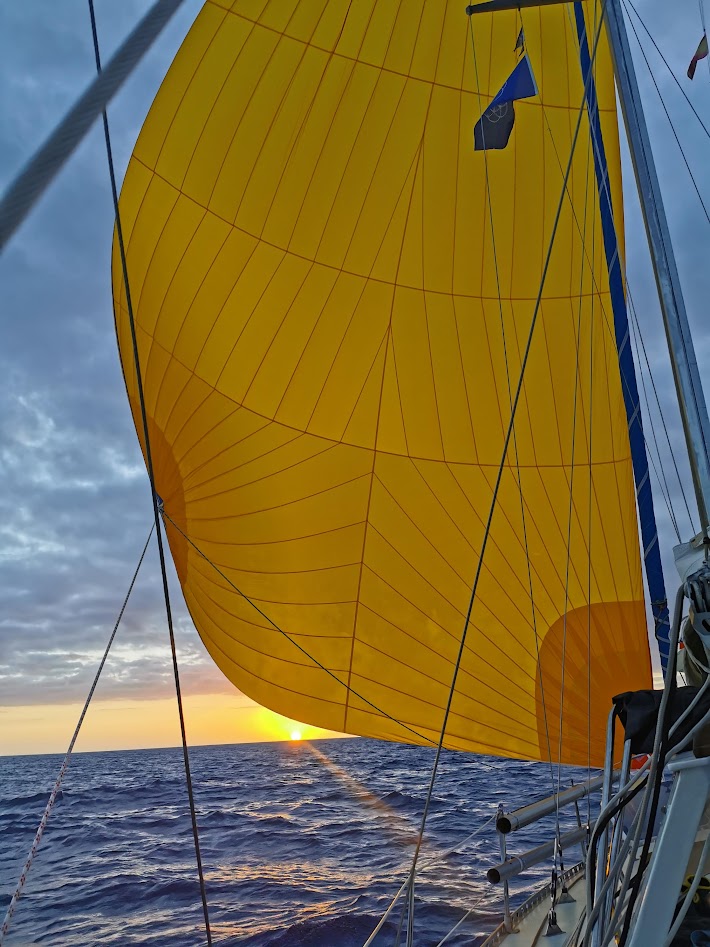
During our long voyage, we used our 106 m² Gennaker with a snuffer—and soon couldn’t imagine sailing without it.
In the past, I usually flew downwind sails free-flying, without a snuffer or furler. But with the snuffer, the Gennaker could be doused safely and under full control, even in rougher conditions. That gave us a real boost in safety and confidence—and, as a result, we used the sail more often and with far less stress than we otherwise would have.
My takeaway: If your budget allows, I’d always recommend a snuffer or furler—especially for sails over 80 m² or when sailing with a small crew.



